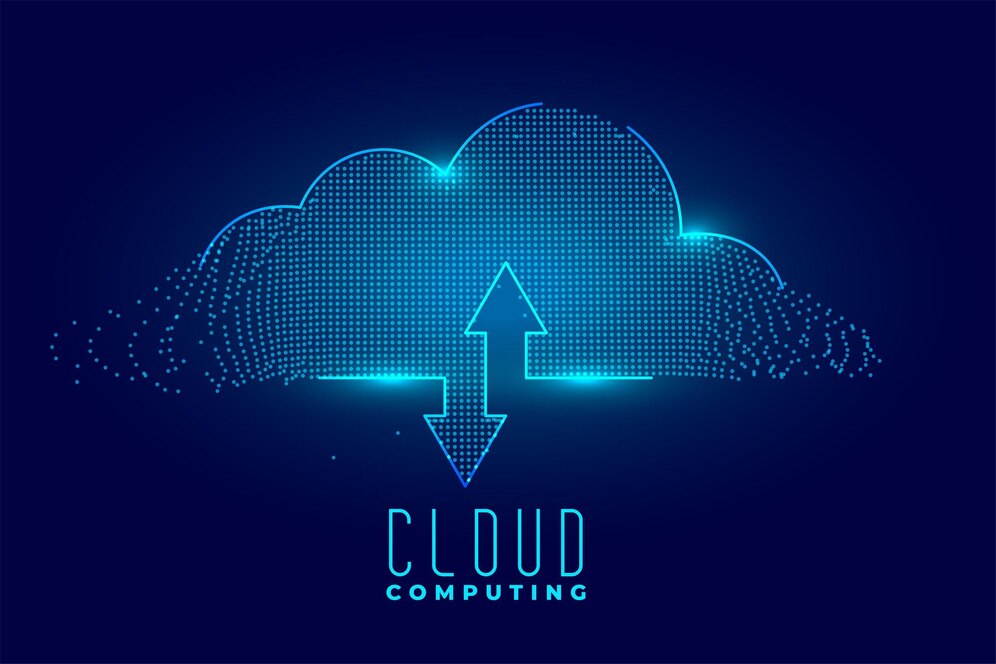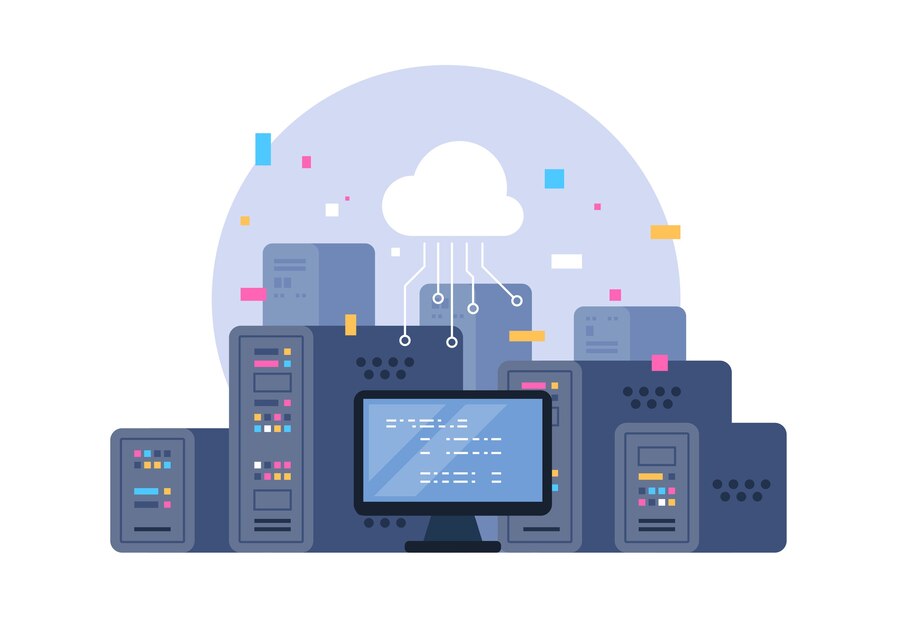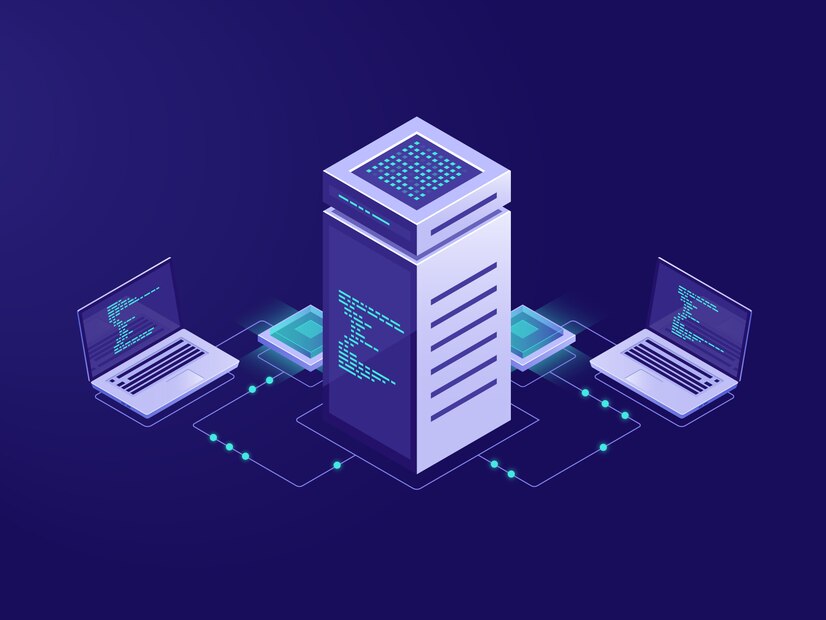The digital landscape is undergoing a seismic shift. As businesses generate unprecedented volumes of data and demand near-instantaneous processing, traditional cloud computing alone can no longer meet every need. Enter the powerful combination of cloud and edge computing—a transformative approach that’s reshaping how we think about tech infrastructure.
This convergence isn’t just another tech trend. It’s a fundamental evolution in how we process, store, and analyze data. By bringing computation closer to where data originates, while maintaining the scalability of cloud resources, organizations are unlocking new possibilities for innovation, efficiency, and real-time decision-making.
What Is Cloud Computing and How Has It Evolved?
Cloud computing revolutionized technology by offering on-demand access to computing resources over the internet. Instead of maintaining expensive on-premises servers, businesses could tap into vast pools of storage, processing power, and applications hosted by providers like Amazon Web Services, Microsoft Azure, and Google Cloud Platform.

The journey began with Infrastructure as a Service (IaaS), evolved through Platform as a Service (PaaS), and expanded into Software as a Service (SaaS). Today’s cloud ecosystem encompasses everything from simple file storage to complex machine learning platforms. This evolution has democratized access to enterprise-grade technology, enabling startups to compete with established corporations.
However, as IoT devices proliferate and real-time applications become critical, the cloud’s centralized nature has revealed limitations. Sending all data to distant data centers introduces latency, consumes bandwidth, and creates potential bottlenecks—challenges that edge computing addresses head-on.
The Benefits and Limitations of Traditional Cloud Infrastructure
Traditional cloud infrastructure excels at providing scalable, cost-effective computing resources. Organizations benefit from reduced capital expenditure, automatic updates, and the ability to scale resources up or down based on demand. The cloud’s centralized model also simplifies data management and enables powerful analytics across vast datasets.
Yet this centralization creates inherent challenges. Latency becomes problematic for time-sensitive applications like autonomous vehicles or real-time video processing. Bandwidth costs escalate when transmitting massive amounts of raw data. Privacy concerns arise when sensitive information must travel to remote servers. These limitations have driven the search for complementary solutions.
Understanding Edge Computing: The Game-Changer in Tech Infrastructure
Edge computing brings processing power closer to data sources—whether that’s a factory floor sensor, a retail store camera, or a connected vehicle. Instead of sending all information to the cloud, edge devices process data locally, transmitting only relevant insights or aggregated results to central systems.
This distributed approach transforms how we handle data-intensive applications. Smart cities analyze traffic patterns in real-time at intersection nodes. Manufacturing plants detect equipment anomalies instantly without cloud round-trips. Healthcare devices monitor patient vitals and alert medical staff immediately to critical changes.
How Edge Computing Complements Cloud Services
Edge computing doesn’t replace cloud infrastructure—it enhances it. Think of edge and cloud as partners in a distributed computing ecosystem. Edge handles time-sensitive processing and data filtering, while cloud provides deep analytics, long-term storage, and coordination across multiple edge locations.
This complementary relationship creates a flexible architecture. Edge devices make split-second decisions based on local data. They send filtered, processed information to the cloud for broader analysis and machine learning model training. Updated models then deploy back to edge devices, creating a continuous improvement cycle.
Consider a retail chain using computer vision for inventory management. Edge servers in each store process video feeds locally, identifying when shelves need restocking. Only relevant alerts and aggregated data reach the cloud, where algorithms analyze chain-wide patterns and optimize supply chain decisions.
Why Are Businesses Moving from Cloud to Edge Computing?
The shift toward edge computing reflects changing business requirements and technological capabilities. Organizations face mounting pressure to deliver real-time experiences, reduce operational costs, and maintain data sovereignty. Edge computing addresses these needs while building upon existing cloud investments.
Real-time processing requirements drive many edge adoptions. Financial trading platforms execute transactions in microseconds. Gaming platforms reduce lag for competitive players. Video streaming services optimize content delivery based on local network conditions. These use cases demand processing speeds that pure cloud architectures struggle to achieve.
Key Drivers Behind the Cloud-to-Edge Transition
Several factors accelerate edge adoption across industries. The explosion of IoT devices generates data volumes that overwhelm traditional cloud architectures. 5G networks enable high-speed, low-latency connections that make edge deployments more practical. Regulatory requirements around data residency push processing to specific geographic locations.
Cost optimization also plays a crucial role. Transmitting and storing raw data in the cloud becomes expensive at scale. Edge computing reduces these costs by processing data locally and sending only valuable insights to central systems. This approach can cut bandwidth expenses by 90% or more in data-intensive applications.
Privacy and security concerns further drive edge adoption. Processing sensitive data locally reduces exposure to potential breaches during transmission. Healthcare providers keep patient data within facility boundaries. Financial institutions process transactions without exposing details to external networks.
What Are the Main Differences Between Cloud and Edge Computing?
Understanding the distinctions between cloud and edge computing helps organizations choose the right approach for specific workloads. While both provide computing resources, they differ fundamentally in architecture, capabilities, and optimal use cases.
Cloud computing centralizes resources in massive data centers, offering virtually unlimited scalability and sophisticated services. Edge computing distributes smaller-scale resources across many locations, prioritizing proximity and real-time response over raw computational power.
Latency, Bandwidth, and Processing Power Comparisons
Latency represents the most dramatic difference. Cloud processing typically involves 50-150 millisecond round-trips, while edge computing can achieve sub-millisecond response times. This gap matters critically for applications like industrial automation, where delays cause production issues, or augmented reality, where lag disrupts user experience.
Bandwidth utilization differs significantly too. Cloud computing requires transmitting all data to central locations, consuming network resources and incurring costs. Edge computing processes data locally, transmitting only processed results or exceptions. A security camera system might analyze video at the edge, sending only detected incidents to the cloud rather than continuous streams.
Processing power varies by deployment model. Individual edge devices typically offer less computational capacity than cloud servers. However, the aggregate processing power of thousands of edge nodes can rival centralized infrastructure while providing better geographic distribution and redundancy.
Real-World Applications: Where Cloud Meets Edge
The convergence of cloud and edge computing enables transformative applications across industries. From smart cities to precision agriculture, organizations leverage this hybrid approach to solve complex challenges and create new opportunities.

Manufacturing leads edge adoption with predictive maintenance systems. Sensors on equipment analyze vibration patterns, temperature fluctuations, and performance metrics in real-time. Edge servers detect anomalies immediately, preventing costly breakdowns. Cloud systems aggregate data across facilities, identifying patterns and optimizing maintenance schedules company-wide.
Industries Revolutionized by Hybrid Cloud-Edge Solutions
Healthcare transformation accelerates through edge computing. Medical devices monitor patients continuously, processing vital signs locally for immediate alerts. Edge servers in hospitals analyze medical imaging, providing preliminary results while cloud systems offer deeper analysis and access to vast medical databases. This hybrid approach improves patient outcomes while maintaining data privacy.
Retail experiences evolve through edge-enabled innovations. Smart stores use computer vision at the edge to track inventory, analyze customer behavior, and prevent theft. Cloud systems coordinate across locations, optimizing pricing, managing supply chains, and personalizing marketing campaigns based on aggregated insights.
Transportation systems become more intelligent and responsive. Connected vehicles process sensor data locally for immediate safety decisions. Edge servers at intersections optimize traffic flow in real-time. Cloud platforms analyze city-wide patterns, adjusting signal timing and routing recommendations to reduce congestion.
Building a Robust Cloud-to-Edge Architecture
Creating an effective cloud-to-edge architecture requires careful planning and consideration of multiple factors. Organizations must balance performance requirements, cost constraints, and operational complexity while ensuring scalability and maintainability.
Start by identifying workloads suited for edge processing. Time-sensitive applications, high-bandwidth data sources, and privacy-sensitive operations typically benefit most. Define clear criteria for data processing locations—what stays at the edge, what moves to the cloud, and when transfers occur.
Best Practices for Implementing Edge Computing Solutions
Successful edge implementations follow established patterns. Design for resilience by ensuring edge nodes can operate independently during network outages. Implement robust security measures at every layer, from device authentication to encrypted communications. Plan for lifecycle management, including remote updates and monitoring capabilities.
Standardization simplifies deployment and maintenance. Choose edge platforms that integrate seamlessly with existing cloud infrastructure. Containerization technologies like Docker and Kubernetes enable consistent application deployment across diverse edge environments. This approach reduces operational overhead and accelerates time to value.
Data management strategies prove critical. Establish clear policies for data retention, synchronization, and backup. Implement intelligent filtering to reduce bandwidth usage while ensuring critical information reaches appropriate destinations. Design for eventual consistency, accepting that edge and cloud data may temporarily diverge.
Security Challenges in Cloud and Edge Computing Environments
The distributed nature of edge computing introduces unique security considerations. While processing data locally can enhance privacy, it also expands the attack surface. Organizations must adapt security strategies to protect both centralized cloud resources and distributed edge infrastructure.
Edge devices often operate in less controlled environments than traditional data centers. Physical security becomes paramount when servers sit in retail stores, factory floors, or remote locations. Implement tamper-resistant hardware, encrypted storage, and secure boot processes to protect against local attacks.
How to Secure Your Hybrid Infrastructure
Comprehensive security requires multiple layers of protection. Network segmentation isolates edge devices from broader infrastructure. Zero-trust architectures verify every connection, regardless of source. Regular security updates patch vulnerabilities across distributed systems.
Identity and access management extends beyond human users to include devices and applications. Implement strong authentication mechanisms for edge nodes. Use certificate-based authentication and regular key rotation. Monitor for anomalous behavior that might indicate compromised devices.
Data protection encompasses encryption at rest and in transit. Process sensitive information at the edge when possible, transmitting only anonymized or aggregated results. Implement data loss prevention measures to ensure compliance with privacy regulations across jurisdictions.
The Future of Computing: Predictions for Cloud and Edge Integration
The convergence of cloud and edge computing continues to accelerate, driven by technological advances and evolving business needs. Emerging trends point toward more intelligent, autonomous, and distributed computing architectures that blur traditional boundaries.
Artificial intelligence integration deepens at both cloud and edge layers. Edge devices gain more sophisticated AI capabilities, making complex decisions without cloud connectivity. Federated learning enables model training across distributed edge nodes while preserving data privacy. Cloud platforms orchestrate these distributed AI systems, continuously improving models based on edge insights.
Emerging Technologies Shaping Tomorrow’s Infrastructure
5G and future 6G networks transform edge computing possibilities. Ultra-low latency and high bandwidth enable new applications previously impossible. Mobile edge computing brings processing power to cellular towers, supporting augmented reality, autonomous vehicles, and smart city applications at unprecedented scale.
Quantum computing integration looms on the horizon. While quantum computers will likely remain cloud-based initially, edge devices might leverage quantum-inspired algorithms for optimization problems. This hybrid approach could revolutionize fields like drug discovery, financial modeling, and climate simulation.
Sustainable computing practices influence architecture decisions. Edge computing reduces energy consumption by minimizing data transmission. Smart power management at edge nodes optimizes energy usage based on workload demands. Cloud providers increasingly power data centers with renewable energy, creating more environmentally friendly infrastructure.
Cost Considerations: Optimizing Your Tech Infrastructure Investment
Evaluating the financial implications of cloud-to-edge transitions requires comprehensive analysis. While edge computing can reduce operational costs, initial investments in hardware and deployment may be substantial. Organizations must carefully balance capital and operational expenditures.
Bandwidth cost reduction often justifies edge investments. Processing data locally eliminates expensive data transfer charges, particularly for video, IoT sensors, and other high-volume sources. Calculate current cloud egress costs and project savings from edge processing to build compelling business cases.
Calculating ROI for Cloud vs. Edge Deployments
Return on investment calculations must consider multiple factors beyond direct costs. Improved application performance might increase customer satisfaction and revenue. Reduced latency could enable new business models or improve operational efficiency. Enhanced data privacy might avoid regulatory penalties or build competitive advantages.
Total cost of ownership includes hardware, software, deployment, maintenance, and operational expenses. Edge infrastructure requires physical space, power, cooling, and security measures. However, these costs often pale compared to the benefits of improved performance and reduced cloud expenses for appropriate workloads.
Consider hybrid approaches that optimize costs while meeting performance requirements. Process time-sensitive data at the edge while leveraging cloud resources for batch processing and long-term storage. This balanced strategy maximizes the value of both computing paradigms.
Getting Started: Your Roadmap to Cloud-Edge Implementation
Embarking on a cloud-to-edge journey requires systematic planning and execution. Organizations should start small, prove value, and scale gradually. This approach minimizes risk while building expertise and momentum.
Begin with a thorough assessment of current infrastructure and workloads. Identify applications that would benefit most from edge computing—typically those with latency sensitivity, high bandwidth usage, or data locality requirements. Prioritize use cases with clear business value and measurable success criteria.
Pilot projects prove concepts and build confidence. Choose a constrained scope with defined objectives. Monitor performance improvements, cost savings, and operational impacts. Use lessons learned to refine approaches before broader deployment.
Develop skills and partnerships for long-term success. Train teams on edge technologies and distributed architectures. Engage with vendors and system integrators experienced in cloud-to-edge transitions. Join industry communities to learn from others’ experiences and avoid common pitfalls.
FAQs
What is the main difference between cloud computing and edge computing?
Cloud computing centralizes data processing in remote data centers, offering vast scalability and powerful resources accessed over the internet. Edge computing distributes processing power closer to data sources, reducing latency and bandwidth usage. While cloud excels at large-scale analytics and storage, edge provides real-time processing and local decision-making capabilities. The key distinction lies in proximity—cloud operates at a distance while edge operates near the data source.
Can edge computing completely replace cloud computing?
Edge computing complements rather than replaces cloud computing. While edge handles time-sensitive processing and reduces bandwidth usage, cloud provides superior resources for complex analytics, machine learning training, and long-term storage. Most modern architectures use both: edge for immediate processing and filtering, cloud for deeper analysis and coordination. The future lies in hybrid approaches that leverage the strengths of each paradigm.
What are the security risks of edge computing?
Edge computing introduces unique security challenges due to its distributed nature. Risks include physical tampering with edge devices, increased attack surface from numerous endpoints, and difficulties in maintaining consistent security policies across locations. Data synchronization between edge and cloud creates additional vulnerabilities. However, edge computing can enhance security by processing sensitive data locally, reducing exposure during transmission.
How much can businesses save by implementing edge computing?
Cost savings vary significantly based on use cases and current infrastructure. Businesses typically save 40-60% on bandwidth costs by processing data locally. Additional savings come from reduced cloud storage and compute charges. However, initial investments in edge hardware and deployment can be substantial. Organizations processing large volumes of data or requiring real-time responses often see ROI within 12-18 months.
What industries benefit most from cloud-to-edge computing?
Manufacturing, healthcare, retail, transportation, and energy sectors see tremendous benefits from cloud-to-edge architectures. Any industry dealing with real-time data processing, IoT devices, or strict data privacy requirements can leverage this approach. Smart cities, autonomous vehicles, video streaming services, and financial trading platforms represent prime examples where the combination of cloud scalability and edge responsiveness creates significant value.
How do I choose between cloud and edge for my application?
Consider latency requirements, data volume, bandwidth costs, and privacy needs. Applications requiring sub-second response times, processing large data volumes locally, or handling sensitive information often suit edge computing. Workloads needing massive computational resources, long-term storage, or global coordination fit cloud computing better. Many applications benefit from hybrid approaches—using edge for immediate needs and cloud for broader insights.
